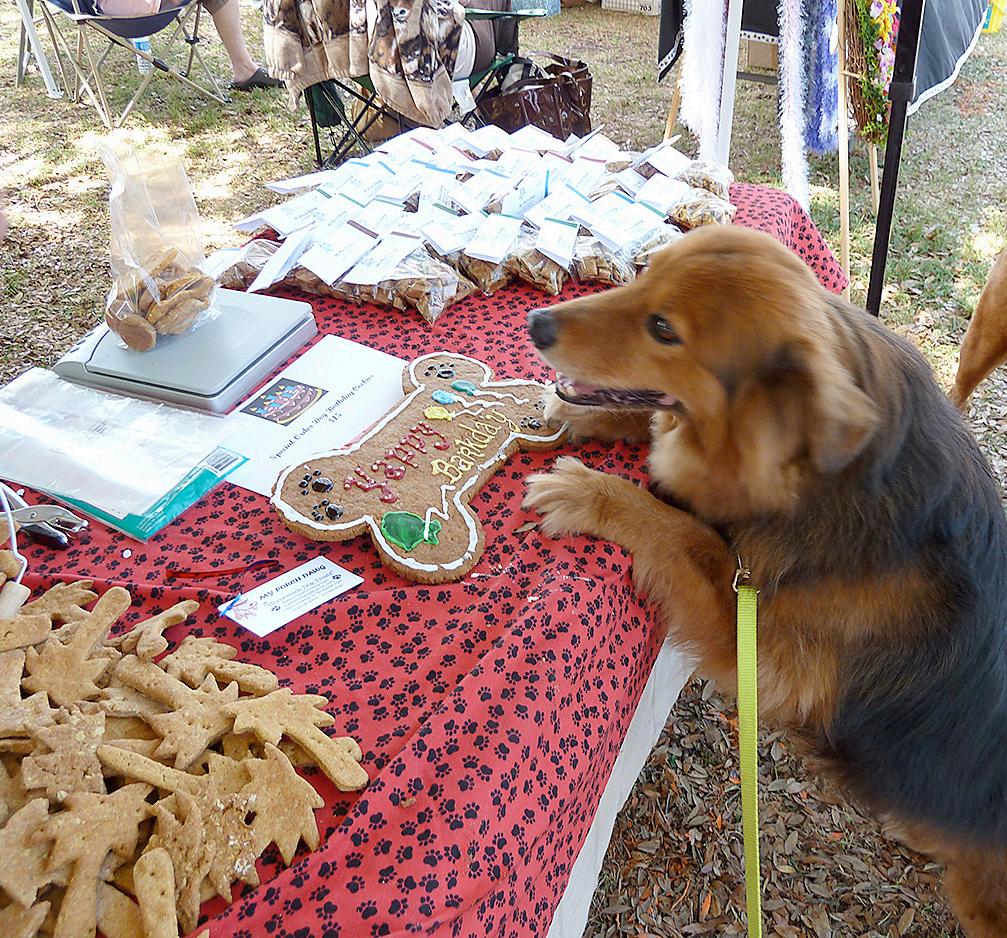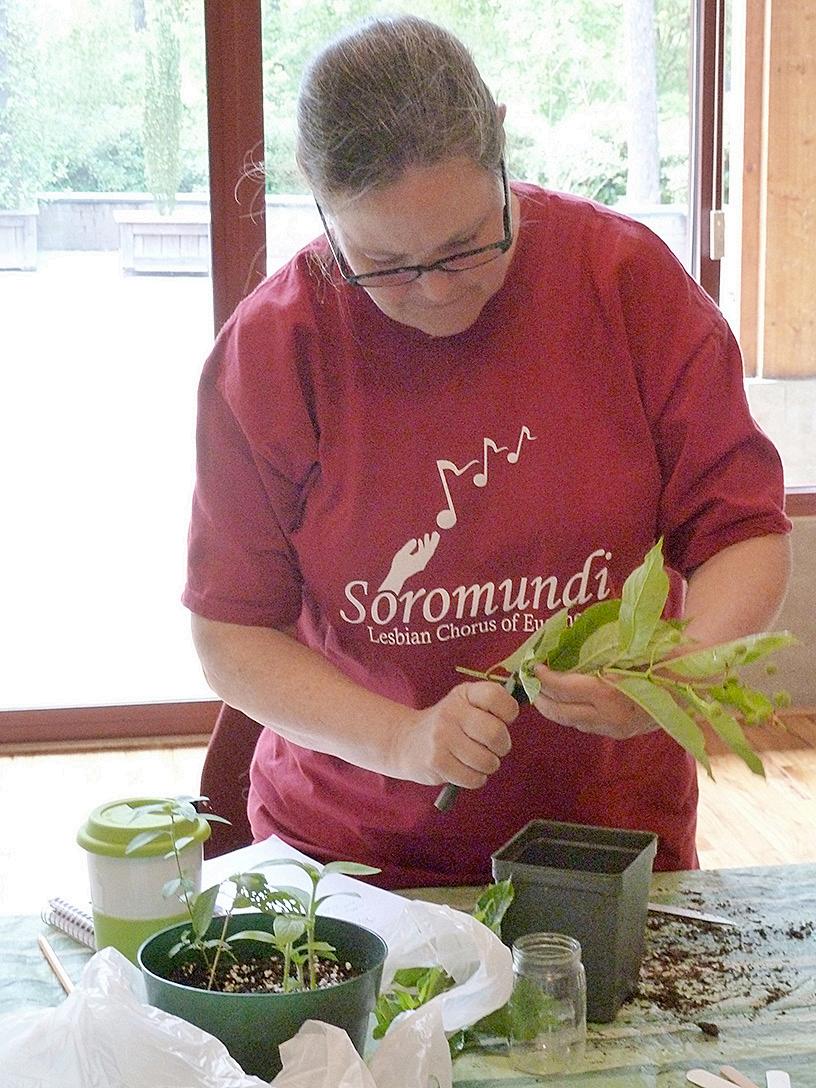
10 minute read
15-year anniversary Publisher Reflects on 15 Years of Going Green
by Beth Ackerly
Going Green intern Beth Ackerly interviewed publisher Valerie Robertson about the history of Cape Fear’s Going Green.
Q: When and why did you start Cape Fear’s Going Green?
A: I’d tried to earn a living in the solar field in the 1980s, when I lived in Maryland outside Washington, D.C. When the incoming administration removed Jimmy Carter’s solar panels from White House, I changed course and sought work that would let me hone my editorial skills, hoping to return to solar or a related field in the future.
Q: What do you hope the magazine accomplishes?
A: The magazine’s mission is to make sustainability mainstream in my home community. True success will be having the magazine become irrelevant, as the concepts of behaving more mindfully in care of our earth and its resources becomes second nature to everyone. This will require a cultural shift away from the extractive nature of so much of what we do.
Q: When did you first become aware of being mindful about resources?
A: My first memorable first-hand exposure to the concept of re-use was when I was age 13, visiting my aunt and her family in Oslo, Norway. I was helping in the kitchen—or trying to—and I crumpled up a piece of used aluminum foil and threw it in the trash. My aunt told me that it was too expensive to throw away after just one use, so we retrieved it and she washed it in order to use it at a later date. This was around 1966 or 1967, and the world I lived in at the time was enjoying the advent of products offering convenience and timesaving, in the form of TV dinners in little aluminum trays taking the place of cooking from scratch. I think of my aunt every time I wash a piece of aluminum foil, which I did again this morning.
Q: When did you first become aware of the importance of avoiding toxins?
A: Visiting a friend in college, I noted that he used Arm & Hammer laundry detergent because, he said, it introduced fewer toxins into the wastewater. This was the same friend who would, when his houseplants shed a leaf, place the leaf on the soil supporting the plant so the nutrients would return to the soil, instead of “cleaning it up” by removing the dead leaf. My first exposure to, if not permaculture, the concept of nutrients working in a cycle. of plastic, come up with creative ways to use renewable energy. I think the unsung heroes are the people who are working to improve conservation of resources and protect the flora and fauna of their home community. It’s not “sexy” to make a home more airtight or better insulated, but it goes a long way to reducing unnecessary waste of energy. Protecting a local snail or insect might not be as flashy as saving the whales or the elephants, but if everyone were committed to protecting what’s found at home, we’d all be better off. I’m also inspired by Jane Goodall, Rachel Carson and other women scientists who’ve had challenges to having their work taken seriously.
Q: Who are some of your heroes?
A: Anyone who is devoting their professional or volunteer life to some aspect of making our world a cleaner, more logical place. I’ve met innumerable people who are working diligently to promote localism, reduce our use of plastic, come up with creative ways to use renewable energy. I think the unsung heroes are the people who are working to improve conservation of resources and protect the flora and fauna of their home community. It’s not “sexy” to make a home more airtight or better insulated, but it goes a long way to reducing unnecessary waste of energy. Protecting a local snail or insect might not be as flashy as saving the whales or the elephants, but if everyone were committed to protecting what’s found at home, we’d all be better off. I’m also inspired by Jane Goodall, Rachel Carson and other women scientists who’ve had challenges to having their work taken seriously.
Q: What changes have you seen in the fifteen years you’ve been publishing?
A: Earth Day Festival and other exhibitor events let me assess what questions the general public is asking. When I started in 2007, people were asking about green building and green renovations. When the bottom dropped out of the housing market in 2008, people shifted to questions about food. This varies slightly from year to year, but includes variations on the themes of, Is it better to eat organic food? How do I grow my own food? Composting is now available as a service, to reduce the volume of stuff we send to our landfill, which is filling up too fast. Now, people are asking what they can do to combat climate change.
Q: Do you write all the articles yourself?
A: Increasingly, articles and accompanying photographs are contributed by members of the community and Going Green interns. Accepting volunteer submissions helps promote the community feel of our magazine. My sister, Mary, wrote our “Contributor Guidelines” to show people how we write for our target audience.

Macy loved to help entertain passersby when we exhibited at events. She was particiularly pleased if she could do a little shopping while there. On this day, at our exhibit at Paw Jam, she was delighted that this was the table right next to ours! May 7, 2011.
photo by Valerie Robertson
Q: Where do you get it printed?
A: I wanted to print on newsprint, both for the cost savings and to avoid printing on glossy bleached paper. Newsprint is too flimsy to run sheets of it through a regular sheet-fed printing press. Blank newsprint comes on huge rolls; only a web press is able to print on long rolls of paper and then trim the pages to size and fold them. We’ve always printed at the family-owned BNPrinting (formerly Benson Newspaper Printing), Benson, North Carolina. Now that Wilmington’s StarNews is printed in Fayetteville, Benson’s is the web press closest to us.
Q: What has been your favorite moment as editor of CFGG?
A: I think my favorite moment was opening the very first bundle of the first issue of the magazine. All of a sudden, this project seemed possible!
Q: Can you share an important moment where a reader let you know how you or your magazine had impacted their lives?
A: I often get feedback from readers saying they’ve learned something from the magazine. The response that has surprised me the most, however, is hearing several people tell me that when they were deciding whether to move to Wilmington, they discovered the magazine, and seeing an environmentally-minded publication alerted them that “it would be OK to live here,” since Wilmington could support such a publication.
Q: What has been your biggest challenge and how did you solve it?
A: My biggest challenge has been finding enough hours to create issues of the magazine seasonally and also perform all aspects of running the business and community outreach. I keep having to reassess how much time I can spend attending events and interacting with people since it represents time away from the computer. I won’t claim to have solved this, but it’s certainly helped to have assistance from an enthusiastic pool of students and members of the community.
Q: What is your favorite issue or article in the magazine? Who were some of your favorite people you interviewed?
A: Wow—this is a hard one, because I’m interested in everything we publish! One of my favorite articles was in the Spring/ Summer 2021 issue featuring the nature artwork of Robert Johnson, who had spent time in every North Carolina State Park and created nature journals and artwork from each one. An exhibit of his work was displayed at the Cameron Museum of Art. I missed the art-focused tour led by a docent, attending instead the tour given by Chris Helms, Park Superintendent at Carolina Beach State Park. Mr. Helms has worked in multiple of our state parks, and so his lecture was filled with insider information on what one would experience if actually in each park: how that fox squirrel in the painting might behave, or what you’d see if you looked over the ridge. (Read the Spring/Summer 2021 issue at issuu.com/capefearsgoinggreen.)
Q: How have you changed as a person since you started Going Green?
A: I’m more aware of how the natural world works, and more aware of how behaviors of mine might impact my environment. I’ve changed some of my behaviors as a result. I’m less cavalier about using singleuse plastics, or throwing things “away” (i.e., into the landfill), or eating meat and tropical fruit. I was never a good student in science classes, but now I attend multiple science lectures a week—I can’t get enough of them. My attitudes have shifted, too—instead of wishing for a newer model of car or computer or whatever, I feel proud of working to get the most use possible out of what I already have.
Q: What is something about the green lifestyle that most people don’t know about or don’t think about that you think they should know?
A: I’m currently reading Inconspicuous Consumption, by Tatiana Schlossberg. The author researched a handful of areas where we often don’t realize we’re using resources, creating waste or emitting greenhouse gases. How much water does it take to make a pound of denim? When you take into account all the variables, is shipping food from far away sometimes the less harmful environmental choice? It’s hard to find this ”total impact” information. But my choices as a consumer make a difference, even if my impact is indirect so it’s not obvious to me. This is the book we’ll discuss in the October meeting of our Environmental Book Club. [See back cover for details —Ed.]

Valerie Robertson learns to propagate plants at a native plant workshop taught by Alistair Glen at Halyburton Park in June 2011.
Q: What are your best tips for people just starting out on their sustainability/”green” journey?
A: A good place to start is to find a group of people who share one or more of your interests. There are dozens of groups in the area, and almost all welcome guests. Some are advocacy groups, some are education-oriented and some are groups of people who like to participate in gardening or kayaking or birding or lobbying for change. Our website has a list of area resources to help you find a group you might like to try. Being mindful of your individual choices at home makes a difference: I maintain that if you behave environmentally responsibly and explain why, you become a role model for the people in your circle, whether you realize it or not. However, acting as a group gives you access to additional information and to people who care about the things you do. It may enable you to effect more change than if you were acting alone.
Beth Ackerly is studying environmental science at UNCW and will graduate in May 2023. She is interning with Going Green in the Spring. She enjoys hiking, writing, music and spending time with her 6-year-old daughter.







